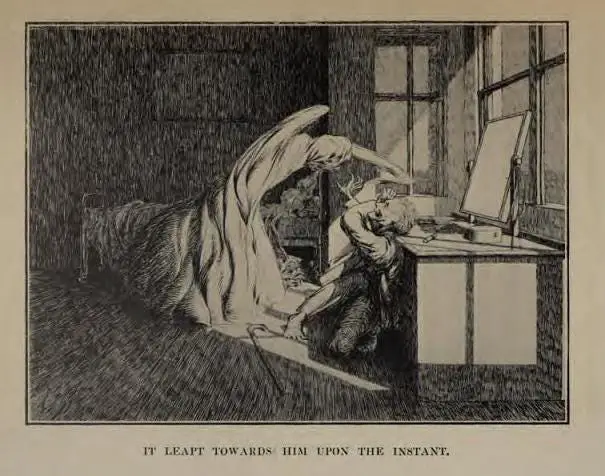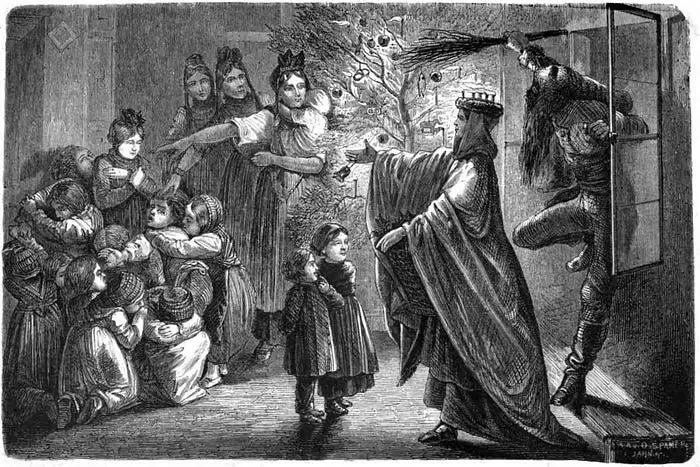One of my favourite Victorian Christmas traditions is the telling of ghost stories on Christmas Eve, and M. R. James is the undisputed master of it. A prolific author of short horror stories, much of his work was written for the specific purpose of reading aloud at his annual Christmas Eve party, where select staff and students were invited to his rooms to be scared witless by candlelight.
I was first introduced to this during undergrad by one of my best friends who was determined to bring this tradition back to life; and for a few years, just before we all headed home to our families, we’d gather to read a couple of his stories to each other. At some point this slipped by the wayside, and now the two of us live on opposite sides of the Atlantic, but I’m finding myself drawn back to it this year now I’ve begun this gothic side project and I wanted to share some suggestions with you. I’ve also included some tea pairings because I really do think that the right tea (or hot chocolate, wine, etc) enhances the experience and helps make it more immersive.
“Oh, Whistle, and I’ll Come to You, My Lad”

Technically even a Christmas story, in that the events of “Oh, Whistle, and I’ll Come to You, My Lad” take place around Christmas, this is the James story I always recommend to new readers. It’s one of the most frightening, if not the most frightening in his canon, and may leave you struggling to sleep alone that night.
Named after the Robbie Burns poem of the same name, Whistle is the tale of a professor holidaying at the seaside who makes the mistake of first removing a small bronze whistle from an archaeological site, and then of blowing into it back at his rooms. The events that follow distort the normal world and mundane objects in ways that are deeply unsettling, especially if you were the sort of child who was afraid of what might appear in empty spaces, in the dark or when you weren’t looking.
“Oh, Whistle, and I’ll Come to You, My Lad” can be read here for free on Project Gutenberg, but if you want a physical copy (and to support both me and a small, queer bookshop, you can buy the anthology its part of here).
To drink I recommend a green tea and mint blend. Green tea and mint are both stimulants, leaving the drinker feeling more alert, like someone watching for apparitions out of the corner of their eye, while the cooling effect of the mint will also leave you feeling chilled even as the tea warms you through. Both Twinnings and Whittards do a nice blend, but I’m pretty sure there’ll be some supermarket own brand and other cheaper options out there too.
“The Stalls of Barchester Cathedral”
Another Christmassy(ish) story because it takes place in and around a Cathedral (alright I’m reaching), “The Stalls of Barchester Cathedral” is an epistolary tale that presents a man haunted — but by what? Following the rise and death of Dr. Haynes, “The Stalls of Barchester Cathedral” unveils greed, ambition, and finally a supernatural judgement rendered for sins he’d kept hidden from mortal eyes. The world building lore in this story is fascinating and there’s an element of wish fulfilment to it as well, of justice meted out by a supernatural hand when human society misses.
I recommend a Christmas spiced tea for this one because a childhood full of singing in Church of England carol services (despite my ostensibly Methodist, somewhat pagan upbringing) has led me to associate churches in winter with the smell of mulling spices. I have my own spice blend I make at home, but if you can’t be doing with that then any mix containing cinnamon and orange peel would be good I think.
Mulled wine or punch is also an excellent accompaniment for this story, and I’m planning on pairing it with a deceptively alcoholic fruit punch that we got at the Christmas market.
You can read this story for free here, or purchase your own copy (supporting me etc) from this link.
“A Neighbour’s Landmark”
One of James’ less popular stories, I really like “A Neighbour’s Landmark” because it’s both creepy and interesting from a social history perspective. Named after a passage in Deuteronomy, “A Neighbour’s Landmark” is another fantasy about supernatural justice for mortal deeds, with the added gothic tragedy of a curse that can’t be lifted because of mundane changes to the mortal world. It’s got haunted woods, a curious librarian, and the lingering discomfort of knowing there’s only so much human beings can do against supernatural forces.
My tea pairing for this story is Blue Lady, but specifically one of the Blue Lady varieties that includes cornflowers because it seems that every company has their own take on this tea. This was a difficult story to match to a tea blend, and in the end the credit goes to my friend for his suggestion of Blue Lady, because of it’s Victorian vibes and sense of formality and restraint; matching the impression the British land owning classes had of themselves, and therefore the aesthetic of this story.
“A Neighbour’s Landmark” can be read here for free.















